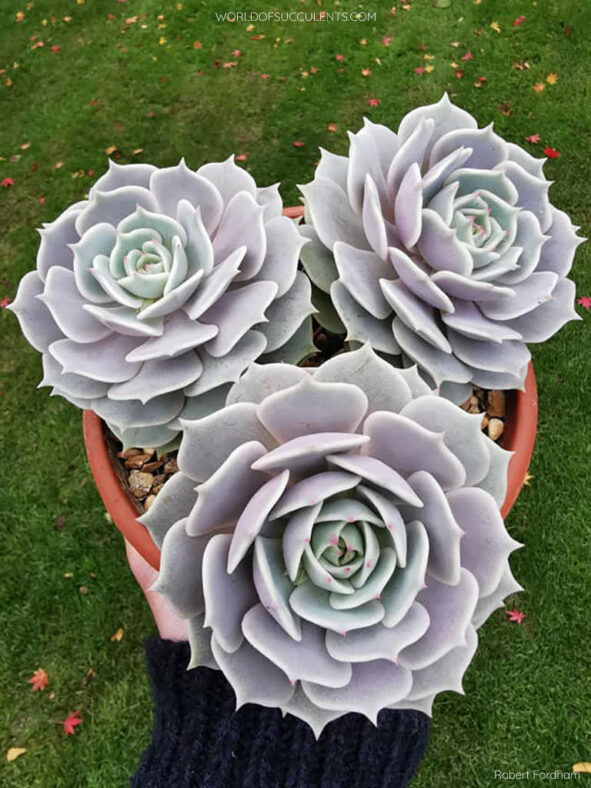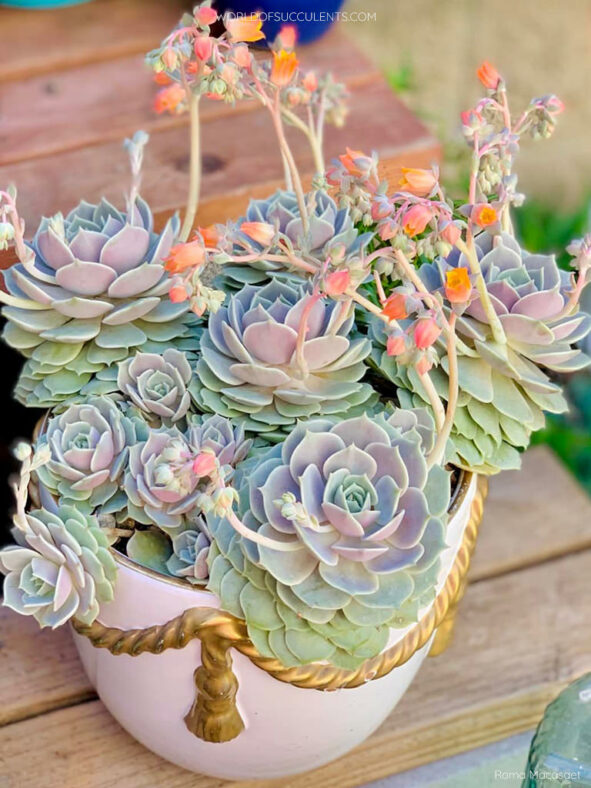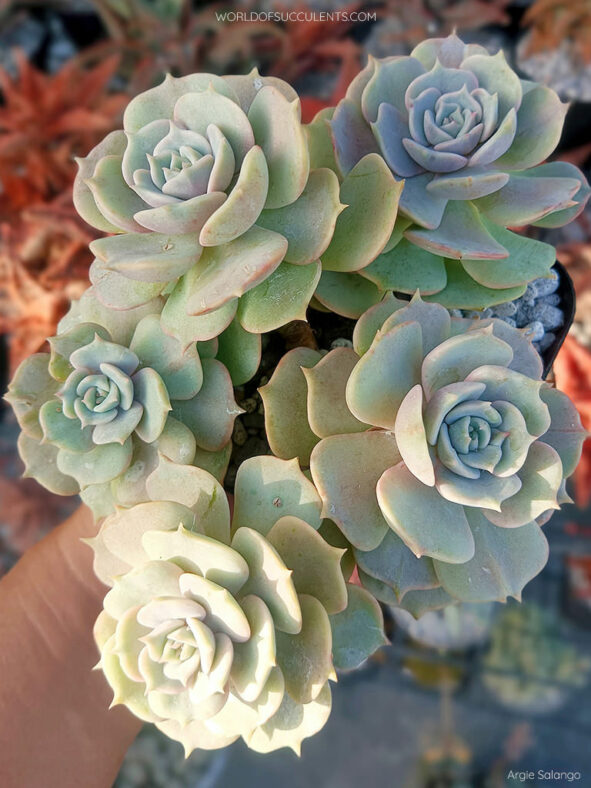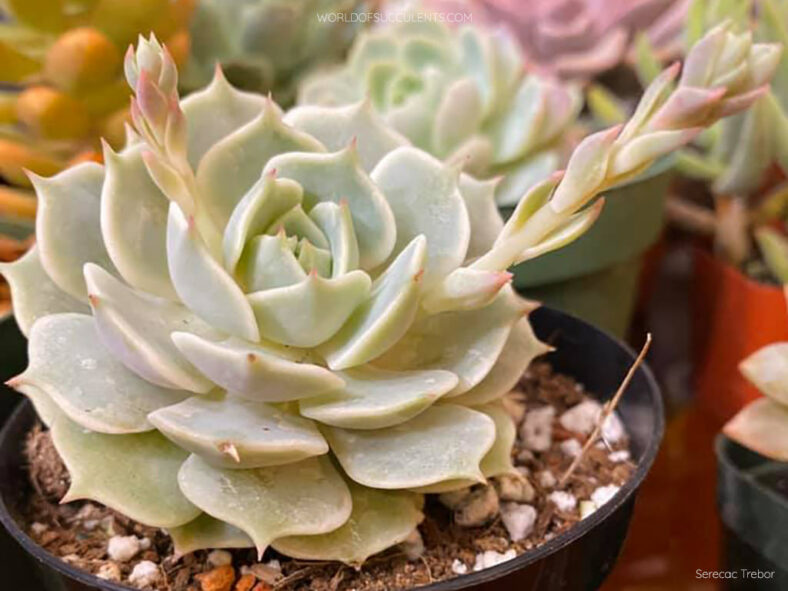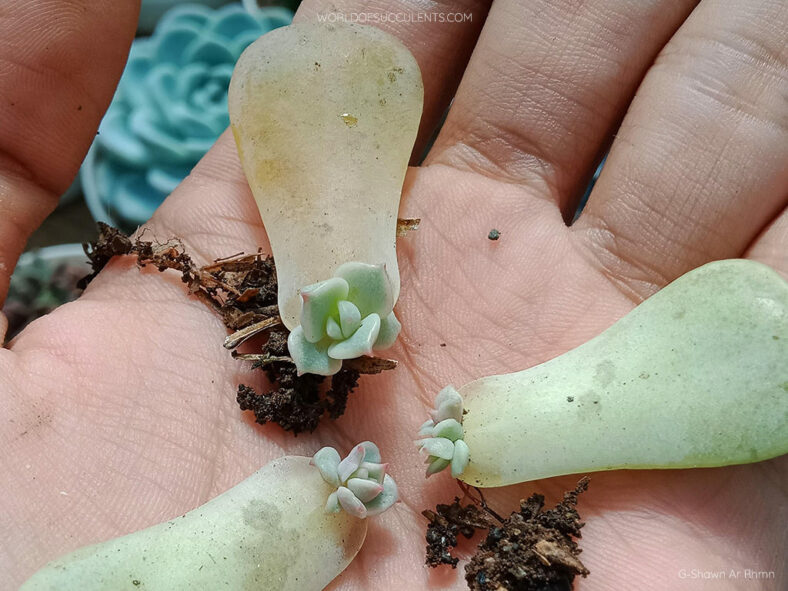Echeveria 'Lola' and Echeveria 'Derenceana' can be easily confused, especially in young specimens where the differences are not distinct. Additionally, both hybrids have identical flowers. However, as they mature, they can be distinguished by their size. Specifically, Echeveria 'Lola' has larger and more open rosettes than Echeveria 'Derenceana'.
Scientific Name
Echeveria 'Lola'
Scientific Classification
Family: Crassulaceae
Subfamily: Sempervivoideae
Tribe: Sedeae
Genus: Echeveria
Origin
Echeveria 'Lola' is a hybrid that was created in 1980 by Dick Wright in California, United States. It is possibly a result of a cross between Echeveria lilacina and Echeveria 'Deresina.' However, it is worth noting that the information in the book "Echeveria Cultivars", which claims that Echeveria 'Lola' is a hybrid resulting from a cross between Echeveria lilacina and Echeveria 'Tippy', is incorrect.
Description
Echeveria 'Lola' is a stunning succulent that forms small, compact rosettes of pointed, spoon-shaped leaves with beautiful pastel colors. The rosettes can reach a diameter of 4 inches (10 cm) and readily produce offsets, forming a dense clump with age. The leaves are pale, bluish-green, with a delicate blush of pink to violet, and rose at the tips. They are covered with a fine, waxy bloom, giving them a pearlescent, marble-like appearance.
During winter and spring, Echeveria 'Lola' produces peach, bell-shaped flowers on short, branched stalks.
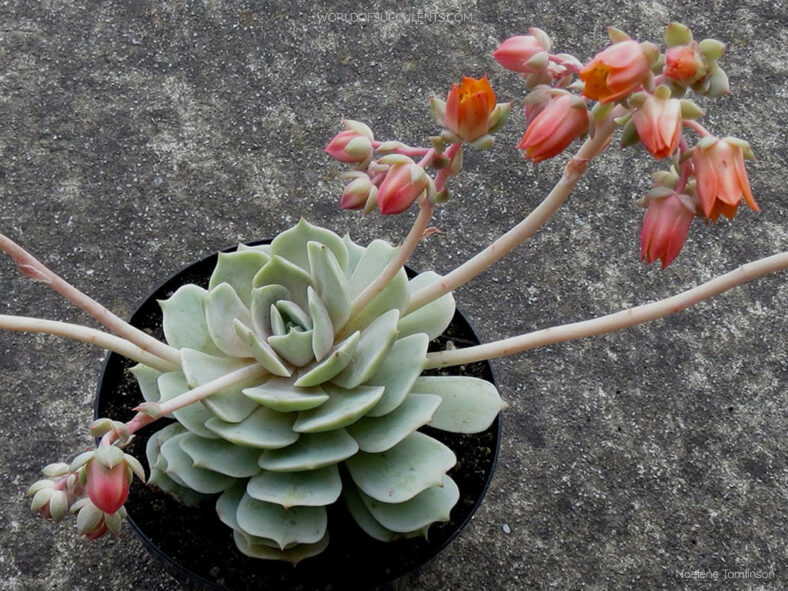
Hybrids of Echeveria 'Lola'
How to Grow and Care for Echeveria 'Lola'
Light: Echeveria 'Lola' grows best in full sun to partial shade for optimal growth. Therefore, place it near the brightest window in your home. Additionally, if you plan to move the plant outside in the spring, do so gradually and avoid exposing it to intense afternoon sunlight.
Soil: Having soil that drains quickly is most important for growing a healthy succulent. While many growers prefer to create their own soil mix, commercial mixes formulated for succulents will work fine.
Temperature: High temperatures are not a problem as long as there is plenty of fresh air. However, Echeveria 'Lola' is a tender succulent that must be brought indoors if there is a risk of freezing temperatures. It grows best in USDA Plant Hardiness Zones 10a to 11b, with average minimum winter temperatures ranging from 30°F to 50°F (- 1.1°C to 10°C).
Watering: This plant prefers the "soak and dry" method during the growing season. Water deeply and then let the soil dry out completely before watering again. Water sparingly during the winter, only enough to keep the plant from shriveling. Above all, if you have a saucer under the pot, be sure to empty the excess water that accumulates.
Fertilizing: Although it can grow well without fertilizer, Echeveria 'Lola' may benefit from extra nutrients. Feed only during the growing season and use a water-soluble fertilizer diluted to half-strength.
Repotting: If growing in a container, repot as needed in spring or early summer. Ensure the soil is dry before starting. Also, always use a container with drainage holes.
Propagation: Echeveria 'Lola' can be propagated in the spring by leaves or offsets.
Learn more at How to Grow and Care for Echeveria.
Toxicity of Echeveria 'Lola'
Echeveria 'Lola' has no reported toxic effects and is safe for growing around children and pets.
Links
- Back to genus Echeveria
- Succupedia: Browse succulents by Scientific Name, Common Name, Genus, Family, USDA Hardiness Zone, Origin, or cacti by Genus
Photo Gallery
Click on a photo to see a larger version.
